The ROBODOC surgery system was approved by the FDA back in August of 2008 and Sutter Hospitals in northern California are the first to use the new 3D robotic ![]() workstation for a hip replacement.
workstation for a hip replacement.
DigiMatch(TM) ROBODOC(R) Surgical System Receives U.S. FDA 510(k) Marketing Clearance
Knee and hip replacements are really going high tech and the ROBODOC system with the ORTHODOC software system allows the surgeon the opportunity to do a virtual surgery with various different replacement devices, not only to practice the procedure, but to use 3D modeling to find the best “fit” for the patient too, so no longer a guess with additional information to use for decision making. Here’s what preparation for surgery looks like, supplied from Sutter Hospitals.
The robot in action:
The virtual replacement procedure on screen……….
A look at the 3D visual software screens.
Some of the tools used during knee and hip replacement procedures almost look like something out of Black and Decker.
Press Release:
SACRAMENTO, Calif. – Eighteen years ago, orthopedic surgeon William Bargar, M.D. made history when, at Sutter General Hospital in Sacramento, he performed the first-ever hip replacement using a robotic device he developed called ROBODOC®, which improves precision in joint replacement surgery. Warren Roberts of Davis was among Dr. Bargar’s first patients; in 1995, he underwent replacement of his left hip as a part of an FDA study using ROBODOC®.
On Wednesday, May 26, Dr. Bargar made history again as he performed joint replacement surgery on Roberts’ right hip at Sutter General Hospital with the new-generation ROBODOC® Surgical System, recently approved by the FDA for total hip arthroplasty procedures. The new ROBODOC® Surgical System, which provides a higher level of precision and accuracy than is possible with the conventional technique, is the only “active” robotic system cleared by the FDA for orthopedic surgery.
The ROBODOC® Surgical System is a proven technology that has been used in more than 24,000 procedures worldwide. But this procedure on Roberts marks the first commercial use of the device in the United States since FDA clearance. Sutter General will become a demonstration site for ROBODOC® as it begins to be used by other surgeons throughout the United States.
Although Roberts’ hip replacement was performed 15 years ago, his left hip is still working well, demonstrating the longevity of the surgical procedure and implant.
“It was like being born again,” said 68-year-old Roberts of the first ROBODOC® surgery. “The years of pain fell away. From day one of the surgery I was feeling great.”
Roberts, the former superintendent of the UC Davis Arboretum, had his left hip replaced due to osteoarthritis from an injury suffered in Peru during a stint in the Peace Corps. This past year, his right hip began affecting his mobility, forcing Roberts to use a cane. His right hip even hurt during swimming, and Roberts was forced to discontinue the exercise.
“I’m excited about this new surgery with ROBODOC®,” said Roberts. “I’m looking forward to having matching hips.”
ROBODOC® provides significant advantages for hip and knee joint replacement surgery that benefit the patient, physician and hospital.
“ROBODOC® is able to perform the surgery more precisely than the usual manual technique, and this is a tremendous asset for the patient,” said Dr. Bargar. “We are always striving for more precision because it means better mechanics and performance for our patients.”
Dr. Bargar, who has two degrees in engineering, says, “It has been my passion to bring the precision of the engineering world to the practice of orthopedic surgery.”
The advantage that ROBODOC® provides to patients undergoing hip replacement surgery is in both the pre-planning stages of the surgery and during the preparation of the bone to receive the implant.
The current conventional technique for planning hip replacement surgery uses plain radiographs (X-rays), which provide only 2-D data. Therefore, they are subject to magnification and rotational errors, which can cause less precision in the surgery.
When using the ROBODOC® Surgical System, the surgeon first plans the surgery on a computer workstation, called ORTHODOC®, using 3-D data from a CT scan of the patient. The surgeon selects the type and size of implant best suited to the patient on the computer and then positions it in the desired orientation by manipulating an image of the implant using the mouse. This so-called “virtual surgery” allows the surgeon to try different implants and orientations to obtain the best fit for the patient. The final computer plan made by the surgeon provides information that is then loaded onto the ROBODOC® device in the operating room on the day of surgery.
During conventional hip replacement surgery, the surgeon prepares the surfaces of the bone for the implant by hand. The surgeon uses hand tools that include broaches, mallets and power reamers, which do not always provide the desired fit and position of the implant.
During the actual surgery using ROBODOC®, the robot precisely mills the bone surfaces, ensuring the exact fit and position of the implant based on the pre-operative plan. Using ROBODOC®, the surgeon can be assured that the final bone preparation matches the pre-operative plan exactly.
It is important to note that during the ROBODOC® total joint replacement procedure, the surgeon maintains complete control of the robot as it executes the patient’s plan. The surgical results provided by ROBODOC® are exactly what have been planned. That’s because the ROBODOC® Surgical System provides consistent reproducible precision in every procedure due to its unique active robotic technology.
“I am happy to make history again,” said the patient, Roberts. “ROBODOC® is Sacramento’s contribution to the medical world.”
About Sutter Medical Center, Sacramento
Sutter Medical Center, Sacramento, which received recognition for being ranked in the top 10 percent in the nation for orthopedic surgery and joint replacement surgery by HealthGrades, has a dedicated and organized joint replacement program called the Sutter Joint Replacement Center. The surgical teams at this center perform more than 1,100 hip, knee, shoulder, ankle and elbow replacement surgeries every year. This is the largest joint replacement volume of any hospital in Northern California. Sutter Medical Center Sacramento outcomes are recognized among the highest throughout Northern California.
About Curexo Technology Corporation
Curexo Technology Corporation develops, manufactures, and markets an image-directed surgical robotic system for orthopedic surgery. The ROBODOC® Surgical System includes two components; ORTHODOC®, a 3-D workstation for preoperative surgical planning, and the ROBODOC® Surgical Assistant, a computer-controlled surgical robot utilized for precise cavity and surface preparation for hip and knee replacement surgeries. The ROBODOC® Surgical System is the only active robotic system cleared by the FDA for orthopedic surgery. To date the system has been used in over 24,000 combined TKA and THA surgical procedures worldwide. ROBODOC®, ORTHODOC®, and DigiMatch™ are registered trademarks of Curexo Technology Corporation. For more information, visit www.robodoc.com.




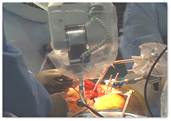
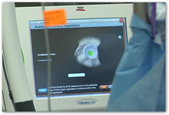


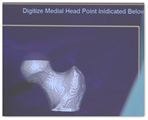
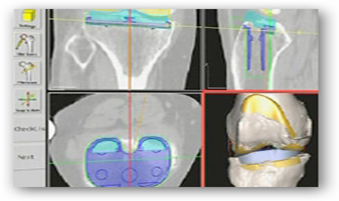
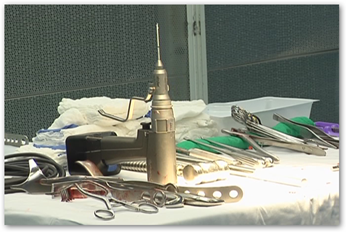



0 comments :
Post a Comment